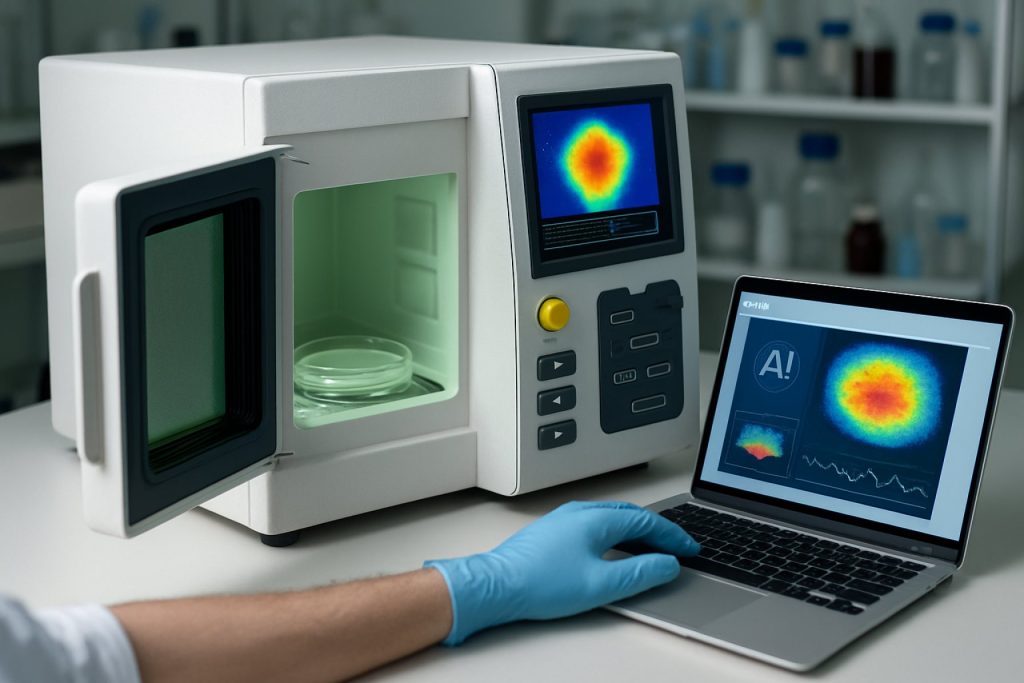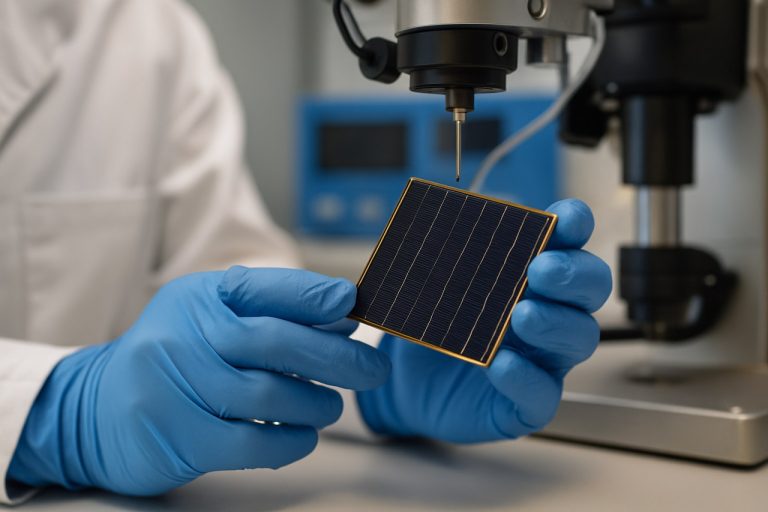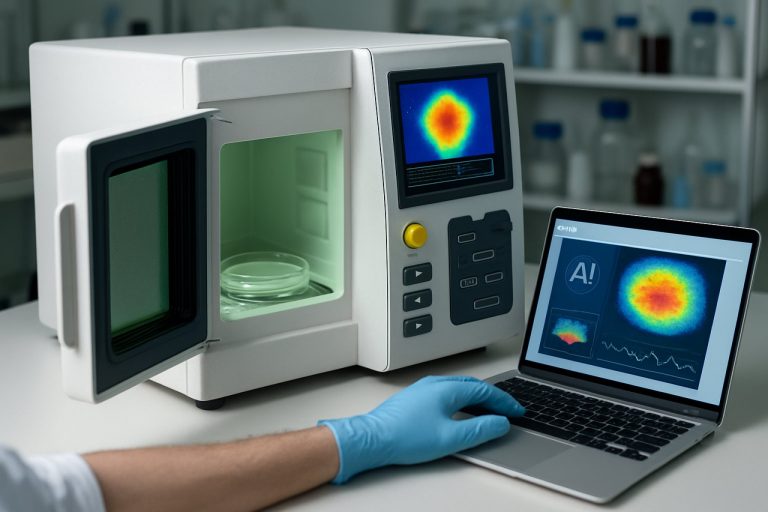
Microwave Bioimaging Systems Market Report 2025: In-Depth Analysis of Growth Drivers, Technological Innovations, and Global Opportunities. Explore Market Size, Key Players, and Strategic Insights for the Next 5 Years.
- Executive Summary & Market Overview
- Key Technology Trends in Microwave Bioimaging Systems
- Competitive Landscape and Leading Players
- Market Growth Forecasts (2025–2030): CAGR, Revenue, and Volume Analysis
- Regional Market Analysis: North America, Europe, Asia-Pacific, and Rest of World
- Future Outlook: Emerging Applications and Investment Hotspots
- Challenges, Risks, and Strategic Opportunities
- Sources & References
Executive Summary & Market Overview
Microwave bioimaging systems represent a rapidly evolving segment within the broader medical imaging market, leveraging non-ionizing microwave frequencies to visualize biological tissues. These systems offer unique advantages, including cost-effectiveness, portability, and the ability to differentiate between healthy and diseased tissues based on dielectric properties. As of 2025, the global microwave bioimaging systems market is witnessing robust growth, driven by technological advancements, increasing prevalence of chronic diseases, and a growing demand for safer, non-invasive diagnostic modalities.
According to MarketsandMarkets, the global bioimaging market is projected to reach USD 16.8 billion by 2025, with microwave-based modalities contributing a growing share due to their emerging clinical applications in breast cancer detection, brain imaging, and stroke diagnosis. The adoption of microwave bioimaging is particularly notable in regions with limited access to conventional imaging infrastructure, as these systems are more affordable and easier to deploy compared to MRI or CT scanners.
Key industry players, including Micrima and Emblation, are actively developing and commercializing microwave imaging solutions, with several products receiving regulatory approvals in Europe and North America. The competitive landscape is characterized by a mix of established medical device manufacturers and innovative startups, fostering a dynamic environment for research and product development.
- Market Drivers: The primary drivers include rising cancer incidence, especially breast cancer, the need for early and accurate diagnostics, and the push for radiation-free imaging alternatives. Additionally, ongoing research funded by organizations such as the National Institutes of Health (NIH) is accelerating the translation of microwave imaging from laboratory to clinical practice.
- Challenges: Despite promising clinical results, challenges remain in terms of image resolution, standardization, and integration with existing healthcare workflows. Regulatory hurdles and the need for large-scale clinical validation also temper the pace of market expansion.
- Regional Trends: North America and Europe currently lead in adoption and innovation, supported by strong healthcare infrastructure and research funding. However, Asia-Pacific is expected to exhibit the fastest growth rate through 2025, driven by increasing healthcare investments and a rising burden of chronic diseases.
In summary, the microwave bioimaging systems market in 2025 is poised for significant expansion, underpinned by technological innovation, unmet clinical needs, and a favorable regulatory environment. Continued investment in R&D and strategic collaborations will be critical to overcoming current limitations and unlocking the full potential of this transformative imaging technology.
Key Technology Trends in Microwave Bioimaging Systems
Microwave bioimaging systems are rapidly evolving, driven by technological advancements that enhance their diagnostic capabilities, resolution, and clinical applicability. As of 2025, several key technology trends are shaping the development and adoption of these systems in medical imaging and diagnostics.
- Integration of Artificial Intelligence (AI) and Machine Learning: AI algorithms are increasingly being embedded into microwave bioimaging platforms to improve image reconstruction, noise reduction, and anomaly detection. These intelligent systems enable faster and more accurate interpretation of complex microwave signals, facilitating early disease detection and personalized diagnostics. Leading research institutions and companies are leveraging deep learning to automate tumor localization and tissue characterization, significantly reducing operator dependency and improving diagnostic confidence (Nature).
- Advancements in Antenna and Sensor Design: The development of ultra-wideband (UWB) antennas and miniaturized sensor arrays has enhanced the spatial resolution and sensitivity of microwave bioimaging systems. These innovations allow for more precise mapping of tissue dielectric properties, which is crucial for differentiating between healthy and pathological tissues. Flexible and wearable antenna arrays are also emerging, enabling continuous and non-invasive monitoring applications (IEEE).
- Hybrid Imaging Modalities: There is a growing trend toward integrating microwave imaging with other modalities such as magnetic resonance imaging (MRI) and ultrasound. These hybrid systems combine the strengths of each technology, offering complementary information that improves diagnostic accuracy, especially in complex cases like breast cancer and brain imaging (MDPI).
- Portable and Point-of-Care Solutions: The miniaturization of hardware and advances in low-power electronics are enabling the development of portable microwave bioimaging devices. These systems are particularly valuable in remote or resource-limited settings, where access to conventional imaging infrastructure is limited. Startups and established medical device manufacturers are actively pursuing regulatory approvals for these next-generation, point-of-care solutions (U.S. Food and Drug Administration).
- Enhanced Computational Imaging Techniques: The adoption of advanced computational methods, such as compressed sensing and iterative reconstruction algorithms, is improving image quality while reducing acquisition time. These techniques are critical for real-time imaging applications and for minimizing patient discomfort during procedures (ScienceDirect).
Together, these technology trends are propelling microwave bioimaging systems toward broader clinical adoption, improved patient outcomes, and expanded use cases in 2025 and beyond.
Competitive Landscape and Leading Players
The competitive landscape of the microwave bioimaging systems market in 2025 is characterized by a mix of established medical device manufacturers, specialized imaging technology firms, and innovative startups. The sector is witnessing increased investment in R&D, strategic partnerships, and product launches as companies vie for technological leadership and market share.
Key players in this market include GE HealthCare, Siemens Healthineers, and Philips, all of which have leveraged their expertise in medical imaging to explore and integrate microwave-based modalities into their portfolios. These companies benefit from established distribution networks, regulatory experience, and significant capital for innovation.
In addition to these giants, specialized firms such as Emblation and Micrima are at the forefront of developing dedicated microwave bioimaging solutions. Micrima, for example, has advanced the commercialization of microwave breast imaging systems, targeting early cancer detection with non-ionizing, cost-effective alternatives to traditional mammography. Their MARIA® system has received regulatory approvals in Europe and is expanding its clinical footprint.
Startups and university spin-offs are also contributing to the competitive dynamics. Companies like Mira Bio and Wave Imaging are leveraging proprietary algorithms and hardware miniaturization to address niche applications such as brain injury assessment and portable point-of-care diagnostics. These entrants often collaborate with academic institutions and healthcare providers to validate their technologies and accelerate market entry.
Strategic collaborations are a hallmark of the sector, with partnerships between device manufacturers, research institutes, and hospitals driving clinical validation and adoption. For instance, Siemens Healthineers has engaged in joint research projects with leading universities to refine microwave imaging algorithms and integrate them with AI for enhanced diagnostic accuracy.
Overall, the competitive landscape in 2025 is marked by rapid innovation, with established players consolidating their positions through acquisitions and alliances, while agile startups push the boundaries of microwave bioimaging applications. The market is expected to remain dynamic as regulatory approvals, reimbursement policies, and clinical evidence continue to shape the fortunes of leading players and new entrants alike.
Market Growth Forecasts (2025–2030): CAGR, Revenue, and Volume Analysis
The global market for microwave bioimaging systems is poised for robust expansion between 2025 and 2030, driven by technological advancements, increasing healthcare investments, and the growing demand for non-invasive diagnostic modalities. According to projections from MarketsandMarkets, the microwave bioimaging systems market is expected to register a compound annual growth rate (CAGR) of approximately 12% during this period. This growth trajectory is underpinned by the rising prevalence of chronic diseases, such as cancer and cardiovascular disorders, where early and accurate diagnosis is critical.
Revenue analysis indicates that the global market size, valued at around USD 350 million in 2025, is anticipated to surpass USD 700 million by 2030. This doubling of market value reflects both increased adoption in clinical settings and the expansion of research applications. North America is projected to maintain its dominance, accounting for over 40% of total revenues, owing to strong R&D infrastructure and favorable regulatory frameworks. Meanwhile, the Asia-Pacific region is forecasted to exhibit the fastest CAGR, propelled by healthcare modernization and government initiatives to improve diagnostic capabilities (Fortune Business Insights).
In terms of volume, the number of microwave bioimaging systems installed globally is expected to grow from approximately 2,500 units in 2025 to over 5,500 units by 2030. Hospitals and diagnostic centers will remain the primary end-users, but notable uptake is also anticipated in academic and research institutions, particularly for oncology and neurology research. The integration of artificial intelligence and machine learning algorithms into these systems is further expected to enhance imaging accuracy and throughput, contributing to higher system sales and upgrades (Grand View Research).
- CAGR (2025–2030): ~12%
- Revenue (2025): USD 350 million
- Revenue (2030): USD 700+ million
- Volume (2025): ~2,500 units
- Volume (2030): ~5,500 units
Overall, the market outlook for microwave bioimaging systems from 2025 to 2030 is highly positive, with sustained growth expected across both developed and emerging economies, driven by innovation, expanding clinical applications, and increasing healthcare expenditure.
Regional Market Analysis: North America, Europe, Asia-Pacific, and Rest of World
The global market for microwave bioimaging systems is witnessing significant regional variations in adoption, technological advancement, and market growth. In 2025, North America continues to dominate the sector, driven by robust healthcare infrastructure, high R&D investments, and early adoption of innovative diagnostic technologies. The United States, in particular, benefits from strong support for medical device innovation and a favorable regulatory environment, with leading institutions and companies such as National Institutes of Health (NIH) and GE Healthcare spearheading research and commercialization efforts. The region’s focus on non-invasive, cost-effective imaging modalities for cancer detection and brain imaging further accelerates market growth.
Europe follows closely, with countries like Germany, the UK, and France investing heavily in healthcare modernization and digital health initiatives. The European Union’s emphasis on early disease detection and personalized medicine, supported by funding from organizations such as Horizon Europe, is fostering the integration of microwave bioimaging systems into clinical practice. Regulatory harmonization across member states and collaborations between academic institutions and industry players are also contributing to a steady increase in market penetration.
The Asia-Pacific region is emerging as a high-growth market, propelled by expanding healthcare infrastructure, rising healthcare expenditure, and increasing awareness of advanced diagnostic technologies. Countries like China, Japan, and South Korea are investing in local manufacturing and R&D, with government initiatives supporting the adoption of innovative medical devices. For instance, China’s “Healthy China 2030” plan and Japan’s focus on medical technology exports are creating favorable conditions for market expansion. However, challenges such as regulatory complexity and varying reimbursement policies may temper the pace of adoption in some markets.
The Rest of the World, encompassing Latin America, the Middle East, and Africa, represents a nascent but promising market for microwave bioimaging systems. Growth in these regions is primarily driven by the gradual improvement of healthcare infrastructure and increasing government and private sector investments in medical technology. However, limited access to advanced diagnostic equipment and budget constraints remain significant barriers. Strategic partnerships and technology transfer initiatives are expected to play a crucial role in unlocking market potential in these regions over the coming years, as highlighted by recent reports from MarketsandMarkets and Fortune Business Insights.
Future Outlook: Emerging Applications and Investment Hotspots
Looking ahead to 2025, the future of microwave bioimaging systems is shaped by rapid technological advancements, expanding clinical applications, and a surge in investment activity. Microwave bioimaging leverages non-ionizing electromagnetic waves to visualize biological tissues, offering a safer and potentially more cost-effective alternative to traditional imaging modalities such as X-ray, CT, and MRI. The technology’s unique ability to differentiate between healthy and malignant tissues based on dielectric properties is driving its adoption in several emerging medical fields.
One of the most promising applications is in breast cancer detection. Microwave imaging systems are being developed as adjuncts or alternatives to mammography, particularly for younger women and those with dense breast tissue, where conventional imaging is less effective. Clinical trials in Europe and North America are demonstrating encouraging sensitivity and specificity rates, spurring further research and commercial interest. Companies such as Micrima and MammoWave are at the forefront, with systems in advanced stages of regulatory approval and market entry.
Beyond oncology, microwave bioimaging is gaining traction in stroke diagnosis, brain injury assessment, and monitoring of chronic conditions such as lymphedema. The portability and real-time imaging capabilities of these systems make them attractive for point-of-care and emergency settings. Research institutions and startups are exploring wearable and handheld devices, which could revolutionize remote diagnostics and telemedicine by 2025.
Investment hotspots are emerging in North America and Europe, where supportive regulatory frameworks and robust healthcare infrastructure facilitate clinical validation and commercialization. According to Grand View Research, the global microwave imaging market is projected to grow at a double-digit CAGR through 2025, with venture capital and strategic partnerships accelerating product development. Notably, collaborations between academic centers and industry players are catalyzing innovation, as seen in initiatives funded by the European Commission and the National Institutes of Health.
In summary, 2025 is poised to be a pivotal year for microwave bioimaging systems, with emerging applications in oncology, neurology, and chronic disease management driving market expansion. Investment is expected to intensify in regions with strong R&D ecosystems, positioning microwave bioimaging as a transformative force in next-generation medical diagnostics.
Challenges, Risks, and Strategic Opportunities
Microwave bioimaging systems, which utilize non-ionizing electromagnetic waves to visualize biological tissues, are gaining traction as a promising alternative to conventional imaging modalities. However, the sector faces a complex landscape of challenges and risks, even as it presents significant strategic opportunities for stakeholders in 2025.
One of the primary challenges is technological maturity. While microwave bioimaging offers advantages such as safety, portability, and cost-effectiveness, its spatial resolution and sensitivity still lag behind established techniques like MRI and CT. This technological gap limits its adoption for certain diagnostic applications, particularly where high-resolution imaging is critical. Furthermore, the lack of standardized protocols and calibration methods complicates cross-platform comparisons and regulatory approval processes, slowing clinical integration (U.S. Food and Drug Administration).
Regulatory hurdles also pose significant risks. As a relatively new modality, microwave bioimaging systems must navigate evolving regulatory frameworks, which can delay market entry and increase development costs. The need for robust clinical validation and long-term safety data further extends time-to-market, especially in regions with stringent healthcare regulations (European Medicines Agency).
Market acceptance remains another challenge. Healthcare providers and patients are often hesitant to adopt novel technologies without clear evidence of clinical superiority or cost-effectiveness. This hesitancy is compounded by the entrenched position of incumbent imaging modalities and the substantial investments required for training and workflow integration (McKinsey & Company).
Despite these obstacles, strategic opportunities abound. The growing emphasis on point-of-care diagnostics and personalized medicine creates a fertile environment for portable, non-invasive imaging solutions. Microwave bioimaging systems are particularly well-suited for applications such as breast cancer screening, stroke detection, and continuous monitoring of chronic conditions, where rapid, repeatable imaging is advantageous (MarketsandMarkets). Additionally, partnerships between device manufacturers, academic institutions, and healthcare providers can accelerate innovation and clinical validation, while government funding for non-ionizing imaging research offers further support (National Institutes of Health).
In summary, while microwave bioimaging systems face notable technological, regulatory, and market-related risks in 2025, targeted innovation, strategic collaborations, and alignment with emerging healthcare trends present substantial opportunities for growth and differentiation in the medical imaging landscape.
Sources & References
- MarketsandMarkets
- Emblation
- National Institutes of Health (NIH)
- Nature
- GE HealthCare
- Siemens Healthineers
- Philips
- Fortune Business Insights
- Grand View Research
- Horizon Europe
- European Medicines Agency
- McKinsey & Company



